What Is the White Stuff in My Potting Soil? Benefits & Grades Explained
-
Pete Ortiz
- Last updated:
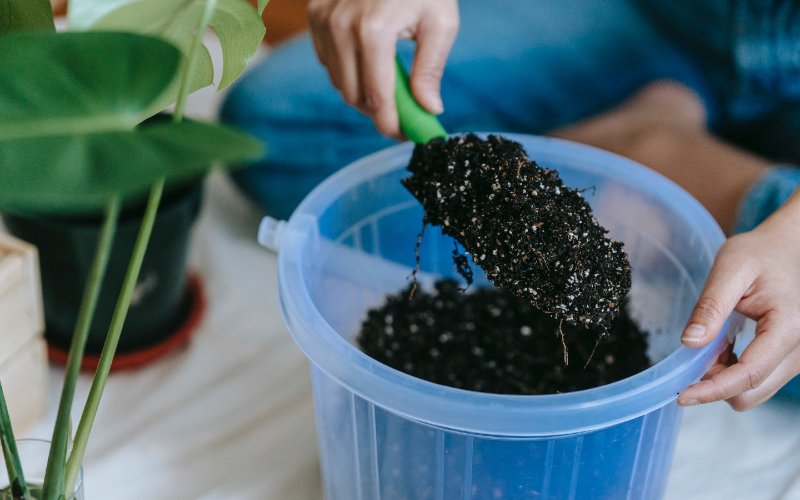
Plants need healthy soil to thrive. Potting soil is specially designed to give plants the nutrients they need to grow and flourish. It also provides the perfect balance of water retention and drainage that all plants need. But have you ever noticed little white balls in potting soil and wondered what they were? Do these help the plants grow? Do they provide nutrients?
These little white balls are called perlite, and they are a form of volcanic glass that has been heated until it is expanded and lightweight. Perlite provides a range of benefits in potting soil and understanding why it is used is essential for anyone who wants to create the perfect soil mix for their plants. Not only does perlite help to aerate the soil and improve drainage, but it also helps to regulate the soil’s moisture and pH levels, making it an ideal addition to potting soil.
The Chemical Composition of Perlite
Perlite is a puffed volcanic glass that has been heated until it is lightweight, porous, and nearly white in color. Perlite is very porous, which helps it retain water and regulate moisture levels, as well as providing excellent aeration in the soil. It consists of around 80% air, which makes it an ideal component of potting soil.
The main component of perlite is silicon dioxide, which is also the main component of sand. Perlite is created when silicon dioxide is heated to extremely high temperatures until it melts and then expands into a lightweight, porous glass.
Believe it or not, the silicon dioxide found in perlite is often sourced from the inside of volcanoes, although it can also be made synthetically. Once the silicon dioxide has melted, it can be spun into fibers or formed into beads. Afterward, it’s then combined with other ingredients to create a balanced potting soil.

What’s the Purpose of Perlite in Potting Soil?
Perlite is an excellent source of soil aeration, which is essential for healthy plant growth. A well-drained soil mix that’s full of air will help to prevent the build-up of excess water, which can lead to root rot and other fungal diseases in plants. Perlite also adds texture to potting soil, which helps to prevent compaction and encourages healthy root growth.
In addition to these benefits, perlite is also pH balanced and helps to regulate the pH levels in potting soil, preventing the soil from becoming too alkaline or acidic. This is particularly important when growing acid-loving plants, such as blueberries and raspberries.
Let’s look at its main benefits.
It Improves Drainage
Perlite helps to improve drainage in potting soil by increasing the volume of air in the soil. It pretty much works like the plant’s own drainage system, with water traveling between the individual particles of perlite, through the gaps in the soil mix, and then out of the bottom of the pot’s drainage holes. The addition of perlite to your potting soil will improve drainage and prevent waterlogging.
It Helps Regulate Soil Moisture and pH Levels
Since perlite is a naturally occurring mineral that is pH neutral, it’s an ideal material for regulating soil pH. When perlite is added to your potting soil, it helps to regulate the moisture levels by retaining water when the soil is dry and releasing water when the soil is moist. This means that your plant’s roots are able to get the water they need without becoming waterlogged.
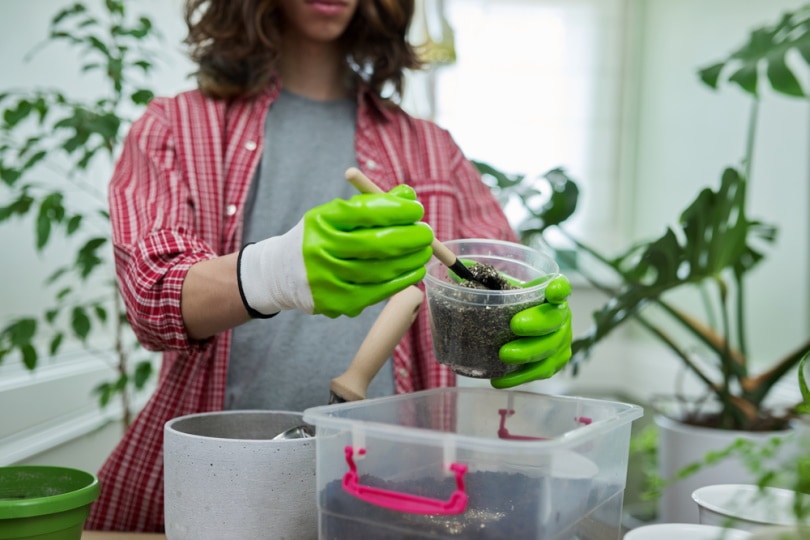
It Helps Maintain Soil Integrity & Health
When you use perlite in potting soil, you can expect to benefit from an improved soil structure that holds more water and nutrients. It also creates an ideal environment for beneficial microorganisms that play a crucial role in the breakdown of organic matter and the release of nutrients for plants. A well-drained soil mix with plenty of perlite can help to prevent the growth of harmful fungi, bacteria, and other disease-causing organisms. It’s also resistant to compaction, which is essential for preventing soil crusting and the build-up of harmful salts.
What Are the Grades of Perlite?
The grading system used for perlite is slightly different from that used for other minerals, making it a bit confusing to understand the terminology at first. It’s actually based on the density of the material. The lower the density, the more porous and lightweight the perlite will be. The higher the density, the more dense and less porous the Perlite will be.
The different grades of Perlite include:
- Fine (<0.5–1 mm): This grade is suitable for root cuttings or when starting small seedlings. It can increase water retention and drainage in your lawn and flower beds.
- Medium (1 mm): This perlite grade falls between coarse and fine. It is a mixture of two grades and is excellent for potting seedlings to aerate their growing medium. This is the best type for hydroponics or succulents and even most orchids.
- Course (1–3 mm): Coarse Perlite offers better drainage and has the largest pore structure of all three types. It is porous and excellent for water retention and aeration for outdoor plants herbs, veggies, and houseplants.
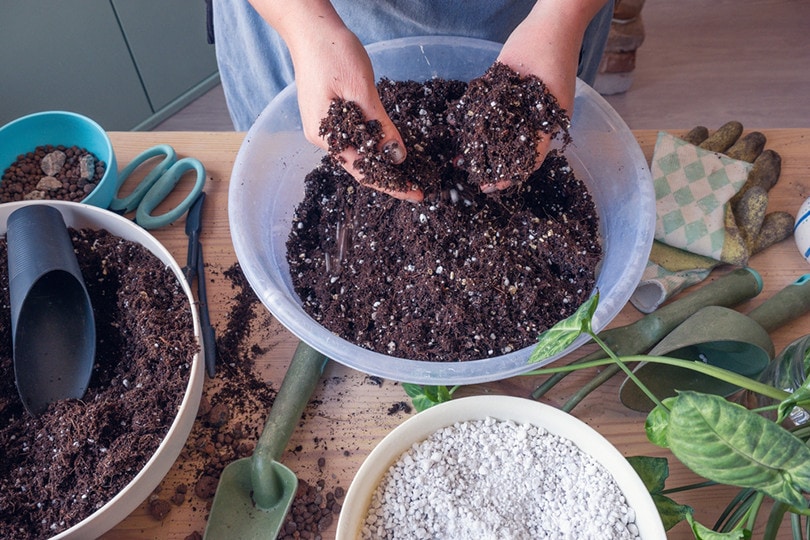
Frequently Asked Questions
Is Perlite Safe for Use in Potting Soil?
Perlite is ideal for use in potting soil because it is pH neutral and inherently sterile due to the high temperatures at which it is processed. It’s also resistant to compaction (something that’s detrimental to plants), so it won’t become waterlogged or cause soil crusting. The only thing to bear in mind is that perlite is an inorganic material, which means that it won’t release any nutrients into the soil. To ensure that your plants get all the nutrients they need, you will need to add a balanced fertilizer (based on your plant’s needs) to your soil mix when you re-pot the plant as needed.
What Other Materials Are Used in Potting Soil?
Other materials that are often used in potting soil include vermiculite, peat moss, and compost. Vermiculite is also used as an additive for potting soil, as it provides great drainage and is also pH neutral. Peat moss is used to provide structure and texture to potting soil that has been grown indoors. It also provides excellent drainage, as well as retaining a lot of water and nutrients. Compost is an excellent source of nutrients for plants and a great source of humus.
Are There Any Safety Considerations When Using Perlite?
Perlite is generally considered to be a non-toxic material. However, it’s still important to consider the potential health risks associated with working with it. Perlite is generally more hazardous when used in large amounts, such as in construction. But with everyday gardening, it’s fairly safe to use, being that it’s mixed in with soil—but using gloves is always advantageous.
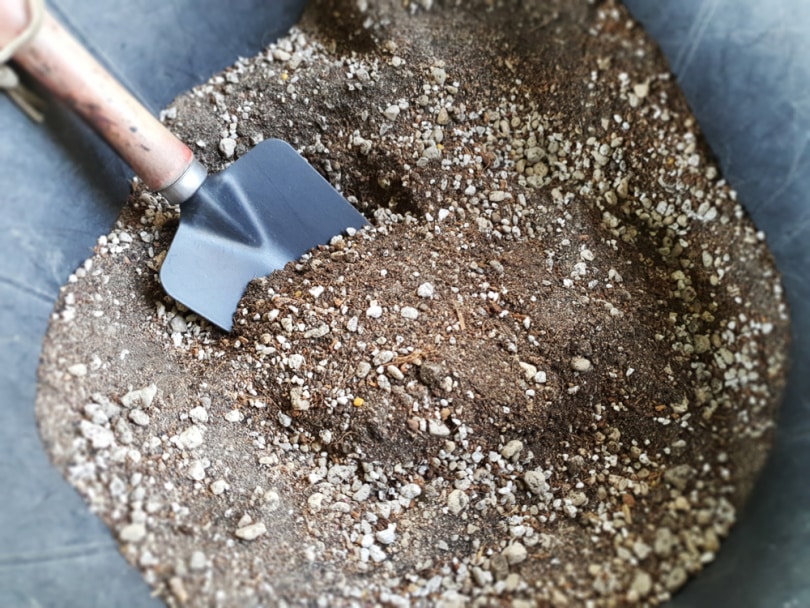
Is Perlite a Sustainable Resource?
Yes, and it can be found throughout the world. The grade and quality of perlite will vary depending on the region it is sourced from. Generally, high-quality perlite can be sourced from all major regions, making it a sustainable and globally available resource.
Does Gardening Perlite Go Bad?
No, perlite does not go bad. In fact, it can last for many years if stored properly. Perlite is a volcanic glass made from the mineral pumice and is used as an alternative to potting soil because of its lightweight, high water retention capacity, and quick start to plant growth. Because of these qualities, perlite is often used in gardens to help increase both drainage and air circulation.
How Much Perlite Should I Add to My Potting Mix?
The answer depends on the type of plants you’re growing and the soil you’re using. Generally speaking, you should aim for a ratio of 1 part perlite to 4 parts soil. For example, if you’re using 4 cups of soil, you should add 1 cup of perlite. It’s also a good idea to mix the perlite in with the soil before adding it to the pot, as this ensures it’s properly distributed. However, if you’re growing plants like succulents that need extra drainage, you might want to increase the ratio to 1 part perlite to 3 parts soil. This will help prevent the soil from becoming too soggy.
How Do I Store Perlite?
When stored properly, perlite can last for many years and still provide the same benefits. The first step in storing perlite is to make sure it is completely dry. If it’s damp, you’ll need to spread it out in a thin layer to let it dry before storing it. Once it’s dry, store it in a cool, dry place away from direct sunlight (like a shed, basement, or garage). Make sure the container you’re using is airtight so that no moisture or dirt can get in.
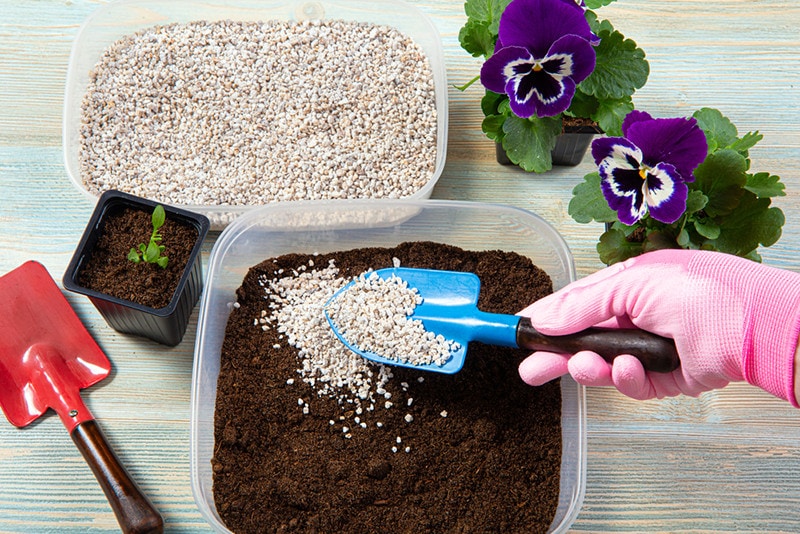
Wrapping Things Up
So, there you have it—those little white balls are perlite. Perlite is an excellent choice for use in potting soil, as it helps improve drainage, retain water, prevent compaction, and maintain soil integrity. It also helps to aerate the soil, making sure that your plants get plenty of oxygen for optimal growth.
Featured Image Credit: Teona Swift, Pexels
Contents



